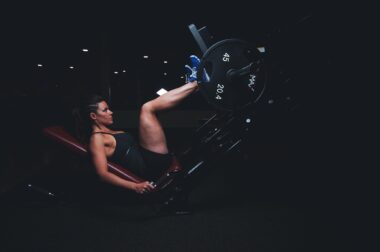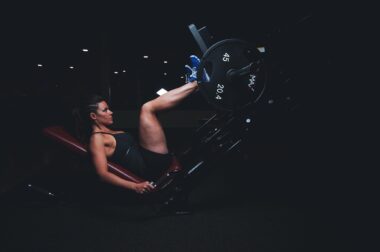Bodyweight Exercises for Core Stability and Injury Prevention
Engaging in bodyweight exercises offers numerous advantages, particularly in enhancing core stability and preventing injuries. A strong core is crucial for supporting daily movements and improving overall performance in various physical activities. Bodyweight exercises can effectively target the abdominal muscles, obliques, and lower back without the need for equipment. By focusing on these areas, individuals can cultivate balance and coordination, which are vital for athletes and fitness enthusiasts. Incorporating exercises such as planks, side planks, and bird-dogs can significantly enhance core strength. Furthermore, performing exercises like mountain climbers and leg raises engages multiple muscle groups, allowing for a holistic approach to training. Individuals should focus on maintaining proper form during these exercises to maximize benefits and minimize risks. An added advantage is the convenience of performing these workouts anywhere, making it easier to stay consistent. Maintaining consistency in training is crucial for gaining core strength and stability. Ultimately, bodyweight workouts contribute not only to strength but also to injury prevention, empowering individuals in their fitness journeys. Emphasizing core stability is key to achieving optimal results in any fitness regimen.
Core stability is essential for various athletic movements, such as running, jumping, and lifting. Enhancing core strength allows individuals to perform these activities more effectively and with less risk of injury. Bodyweight exercises like squats and lunges also promote core engagement, further supporting overall fitness goals. When performing these exercises, it’s important to focus on maintaining a neutral spine and controlled movement patterns. This approach helps to develop the stability needed in athletic pursuits and daily actions. Additionally, bodyweight exercises can be adapted for different fitness levels, allowing beginners to build strength while more advanced individuals can challenge themselves further. Progressions or variations of basic movements can be introduced over time to ensure continuous improvement. Individuals can also combine multiple exercises into a circuit routine, maximizing the efficiency of their workouts. Moreover, paying attention to breathing techniques during these exercises aids in boosting performance. It’s also important to integrate rest days to allow the body to recover adequately. Recovery is just as crucial as the workouts themselves to prevent injuries and maintain steady progress.
The Role of Proper Form
Proper form during bodyweight exercises is crucial for maximizing effectiveness and minimizing injury risk. Focusing on alignment helps activate the right muscles and ensures that individuals are exercising safely. When performing exercises like crunches or push-ups, maintaining proper body mechanics is essential. Engaging the core throughout the movements stabilizes the spine and prevents unnecessary strain on the lower back. Individuals should spend time mastering basic techniques before moving to advanced variations, ensuring that they can perform each exercise correctly. It can be helpful to have a coach or an experienced partner critique form while exercising. Moreover, filming workouts can also serve as a great tool to analyze form. Over time, developing an understanding of the body’s mechanics enhances performance and leads to better results. Incorporating warm-up and cool-down sessions into exercise routines prevents muscle tightness and maximizes flexibility. Incorporating stretching and mobility work before and after workouts promotes better recovery and reduces injury chances. Consistency in practicing good form will enable individuals to sustain long-term progress in strength and stability.
Engaging in bodyweight exercises not only improves core stability but also enhances overall body awareness. Understanding how to move efficiently can greatly enhance performance in various physical activities. Exercises like the plank not only target the core but also improve shoulder stability and endurance. Enhancing shoulder stability is vital for activities like swimming and weightlifting. Other useful exercises include the hollow body hold and the superman, which challenge the core muscles and enhance body awareness. Developing proprioception through bodyweight workouts contributes to skill development in sports. Additionally, consistent practice of these exercises contributes positively to mental health by reducing stress and anxiety. A strengthened core promotes better posture and supports overall well-being. Furthermore, improved balance and coordination from targeted exercises extend benefits into everyday tasks, such as lifting something off the ground. Engaging in these workouts fosters a sense of accomplishment, motivating individuals to continue their fitness journey. Sustained engagement leads to continuous progress and increased satisfaction in physical capabilities. Finally, remaining patient during progression is key as improvements take time and consistency. Working towards fitness goals becomes an enjoyable endeavor with every step taken in the right direction.
Combining Cardio and Strength
Combining bodyweight exercises with cardiovascular workouts creates a well-rounded fitness regimen. High-intensity interval training (HIIT) often incorporates bodyweight moves, providing both strength and cardiovascular benefits. This approach not only elevates the heart rate but also allows individuals to build muscle simultaneously. Circuit training using bodyweight exercises can create a robust workout session by alternating strength and cardio movements. Exercises like jumping jacks, burpees, and squat jumps offer excellent conditioning alongside strength training. Individuals can design versatile routines that incorporate strength, stability, and cardio, ensuring comprehensive fitness progress. By alternating exercises, workouts can stay exciting and engaging, preventing boredom from repetitive routines. Additionally, this combination offers an efficient solution for those with limited time, maximizing workout effectiveness in shorter periods. Proper nutrition should complement this training, providing energy and aiding recovery. Fueling the body with the right nutrients supports muscle growth and overall performance. Staying well-hydrated is essential during workouts. The benefits of incorporating both strength and cardio elements result in improved endurance and functionality. Ultimately, individuals can achieve fitness objectives while remaining injury-free through such balanced training approaches.
Recovery remains a pivotal part of any workout regimen, especially after bodyweight exercises focusing on core stability. Permit adequate time for the body to heal after intense sessions. Rest days and incorporating gentle activities, like yoga or walking, help reduce muscle soreness and fatigue. Effective recovery strategies also include hydration and balanced nutrition. Consuming sufficient protein aids in muscle repair, while carbohydrates replenish energy stores. Additionally, understanding when to listen to one’s body is fundamental for long-term fitness sustainability. Signs of fatigue signal the need for a break to recoup and rejuvenate. Failure to rest can lead to burnout or injury, hindering fitness progress. Engaging in mindfulness practices can effectively manage stress levels and promote relaxation. Adding stretching into a routine aids recovery while enhancing flexibility over time. Utilizing foam rollers can alleviate tight muscle knots and improve blood circulation post-workout. Therefore, prioritizing recovery enhances overall performance and ensures individuals remain motivated and dedicated to their fitness journey. Strategically scheduling recovery into workout plans ultimately leads to better results and satisfaction in achieving fitness goals.
Staying Motivated
Finding motivation can sometimes be a challenge when engaging in bodyweight exercises. Setting clear, achievable goals provides a sense of direction and progress. Create milestones, making them specific to keep motivation high during workouts. Tracking progress through a journal or app increases accountability while celebrating small successes promotes confidence. Additionally, incorporating variety into routines can keep workouts fresh and exciting. Trying new exercises or varying the timing can maintain engagement and eagerness. Joining fitness groups or engaging with friends can also enhance motivation. Social support fosters accountability and makes exercising enjoyable rather than a chore. Furthermore, utilizing online resources, such as tutorial videos, can help individuals learn new exercises effectively. Gradually increasing the intensity or duration of workouts keeps individuals challenged and stimulated. Ultimately, establishing a personal connection with fitness cultivates a lifelong passion for staying healthy. Remembering the reasons behind pursuing fitness goals can reinvigorate motivation during tough times. Celebrating accomplishments, no matter how small, boosts morale and leads to longer-lasting dedication.
Finally, integrating bodyweight exercises into everyday life can lead to sustainable fitness habits. Practicing core stability exercises regularly ensures a balanced approach to overall health. These practices allow for continuous improvement, resilience, and adaptability. Individuals should aim to incorporate core stability training into their fitness routines at least a few times a week. Consistency is key in fostering long-term physical benefits and injury prevention. As confidence grows, individuals can increase workout complexity or duration, stimulating progress effectively. Encouraging self-discipline through regular practices serves well in achieving desired results. Ultimately, developing a strong core translates into improved performance across all physical activities, enhancing quality of life. The journey of wellness should focus on personal growth and satisfaction derived from various exercises. Implementing bodyweight workouts can fuel both physical and mental health improvement. Moving forward, individuals should embrace their fitness journey wholeheartedly, celebrating every step. Bodyweight exercises provide great benefits as individuals learn about their bodies and capabilities without the need for equipment. Utilize the freedom and accessibility of bodyweight training to cultivate lifelong fitness habits that lead to improved health and well-being.





